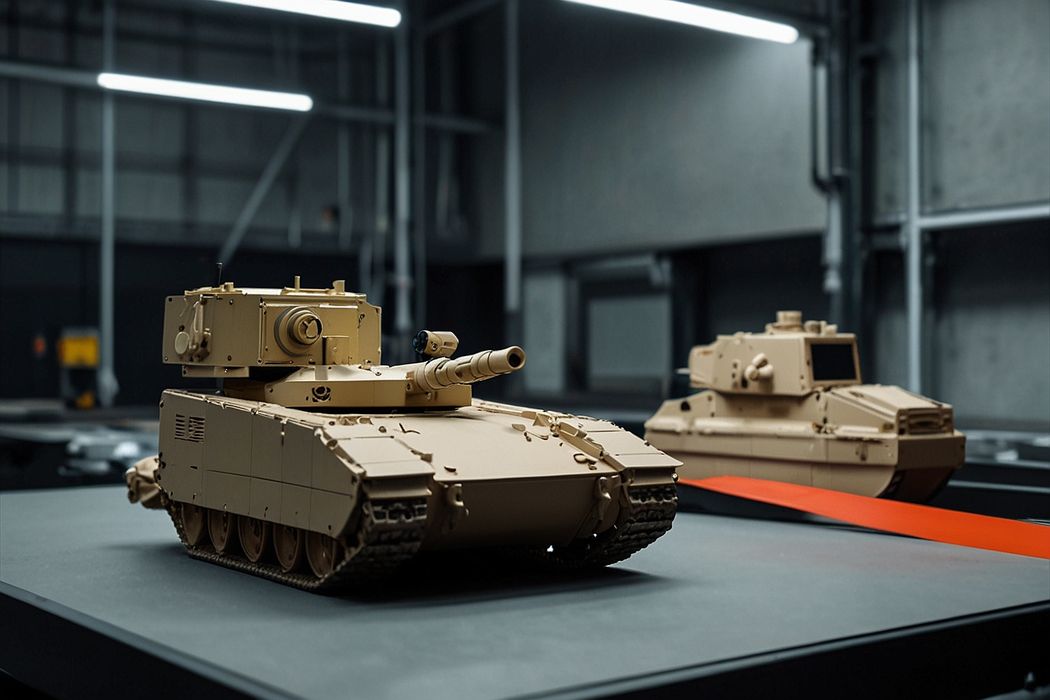
Charles R. Goulding and Preeti Sulibhavi describe how Finland is transforming its defense strategy by integrating 3D printing technology, enhancing military readiness and innovation in response to geopolitical challenges.
Having the largest Western contiguous border with Russia and in light of historical confrontation with Russia, Finland is developing a model defense strategy.
Finland has long maintained a neutral stance in international conflicts, owing to its precarious geographical position sandwiched between Russia and the West. However, the country’s history with Russia has been tumultuous, marked by conflicts such as the Finnish War of 1808-1809, the Finnish Civil War of 1918, and the Continuation War of 1941-1944 during World War II.
In the wake of Russia’s invasion of Ukraine in 2022, Finland’s longstanding policy of neutrality has been put to the test. On April 4, 2023, Finland became the 31st member of NATO. The country’s leadership has recognized the need to bolster its defense capabilities in the face of an increasingly assertive and unpredictable Russia. Consequently, Finland has embarked on an ambitious modernization program for its defense systems, aiming to enhance its military readiness and deterrence capabilities. It has begun organizing nearly a thousand suppliers and is storing weapons in neighboring countries like Norway and Sweden. We have previously covered Sweden’s defense budget.
One promising avenue that Finland is exploring to support its defense strategy is the integration of 3D printing. This cutting-edge technology offers several advantages in the realms of military logistics, spare parts production, and rapid prototyping of customized equipment.
By leveraging 3D printing, the Finnish armed forces can potentially fabricate replacement parts for military equipment on-site, reducing lead times and mitigating supply chain disruptions. This capability is particularly valuable in remote or hostile environments, where traditional supply lines may be compromised. Additionally, 3D printing enables the rapid prototyping and customization of weapons, tank components, and other critical hardware, allowing for iterative design improvements and tailored solutions to meet specific operational requirements.
Finland has already taken steps to harness the potential of additive manufacturing for its defense sector. For instance, the Finnish company Patria, a prominent provider of defense, security, and aviation solutions, has been exploring the use of 3D printing for various applications, including the production of spare parts and prototypes.
In 2021, Patria partnered with a Lithuanian additive manufacturing company, Nordsys, to establish a 3D printing facility dedicated to the defense industry. This collaboration aims to leverage Nordsys’ expertise in metal additive manufacturing to produce high-quality, mission-critical components for Patria’s military and aerospace clients.
Another Finnish company, EOS, a global leader in industrial 3D printing solutions, has been actively involved in the defense sector. EOS has provided additive manufacturing systems and materials to various military organizations and contractors, enabling the production of lightweight yet robust components for aircraft, ground vehicles, and weapon systems.
The integration of 3D printing into Finland’s defense strategy is not limited to hardware production. Additive manufacturing can also play a role in the development of advanced materials and coatings for enhanced protection and performance. For example, researchers at Aalto University in Finland have explored the use of 3D printing to produce lightweight yet highly durable ceramic materials for protective armor applications.
The Research & Development Tax Credit
The now permanent Research and Development (R&D) Tax Credit is available for companies developing new or improved products, processes and/or software.
3D printing can help boost a company’s R&D Tax Credits. Wages for technical employees creating, testing and revising 3D printed prototypes can be included as a percentage of eligible time spent for the R&D Tax Credit. Similarly, when used as a method of improving a process, time spent integrating 3D printing hardware and software counts as an eligible activity. Lastly, when used for modeling and preproduction, the costs of filaments consumed during the development process may also be recovered.
Whether it is used for creating and testing prototypes or for final production, 3D printing is a great indicator that R&D Credit-eligible activities are taking place. Companies implementing this technology at any point should consider taking advantage of R&D Tax Credits.
Conclusion
As Finland continues to strengthen its defense capabilities in response to the evolving geopolitical landscape, the adoption of additive manufacturing technologies is poised to become a pivotal component of its comprehensive strategy. By leveraging the flexibility, speed, and customization potential of 3D printing, the country aims to enhance its military readiness, streamline logistics, and foster innovation in the development of cutting-edge defense solutions.
Although Finland joined NATO to enhance its security, Europe and the rest of the world can learn from its own comprehensive defense strategy.
